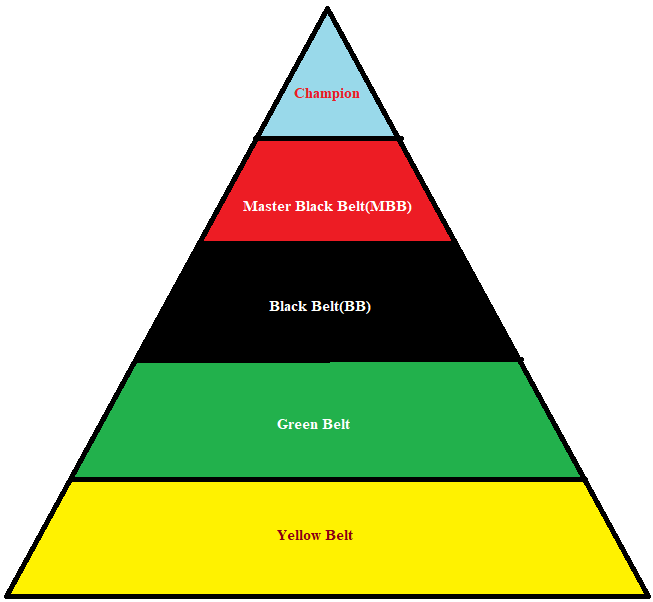
Six Sigma certifications are highly valued credentials for professionals looking to advance their careers in quality management. Two of the most popular options are Green Belt and Black Belt certifications. But what’s the difference between the two, and which one is right for you? This guide examines the key distinctions, responsibilities, and benefits to help you decide.
Six Sigma Green Belt vs. Black Belt
Six Sigma is a data-driven approach to eliminating defects and variability in business processes. It relies on rigorous statistical analysis to achieve consistent, high-quality outcomes.
Green Belt and Black Belt certifications reflect Six Sigma proficiency and responsibility levels. Let’s compare them:
What’s the Difference?
Green Belts focus on specific Six Sigma projects within their department or function. They work under the guidance of Black Belts.
Black Belts have advanced knowledge and take a leadership role. They manage complex Six Sigma projects across various functions and mentor Green Belts.
What is a Six Sigma Black Belt?

Image Source: Blue Dragon Taekwondo
A Six Sigma Black Belt is an expert and leader of process improvement initiatives across an organization. Key responsibilities include:
- Leading complex Six Sigma projects involving multiple departments or functions
- Mentoring and coaching Green Belts and other team members
- Developing detailed project charters, plans, and documentation
- Applying advanced statistical analysis like regression testing and ANOVA
- Communicating with executives and stakeholders about project progress
- Overseeing programs to maximize ROI and process efficiency
They have in-depth expertise in Six Sigma principles, tools, and methodology. Black Belts demonstrate proficiency in high-level statistical skills like hypothesis testing, design of experiments, and statistical process control.
A Black Belt certification requires rigorous training, exams, and hands-on project experience. Candidates typically need 2-3 years of experience working on process improvement initiatives. The certification reflects deep technical knowledge and leadership capabilities.
What is a Six Sigma Green Belt?

Image Source: Flickr
A Six Sigma Green Belt contributes to process improvement projects within their department or function. Typical responsibilities include:
- Working on defined Six Sigma projects under a Black Belt’s guidance
- Gathering and analyzing data to understand issues and shortcomings
- Documenting processes and developing improvements
- Supporting Black Belts with statistical analysis and data collection
- Assisting with managing team members and stakeholders
Green Belts have foundational knowledge of Six Sigma principles, project execution, and data analysis tools. However, they focus on specific applications rather than organization-wide oversight like Black Belts.
Earning a Green Belt certification requires training courses and exams. Some experience with process improvement initiatives is preferred but optional. The Green Belt reflects functional expertise to deploy Six Sigma tactics.
Levels in Six Sigma

Image Source: Wikimedia Commons
Six Sigma certifications are structured into hierarchical levels that reflect increasing proficiency and responsibility:
- Green Belt: Contributor to projects within a department/function
- Black Belt: Leader of complex initiatives across departments
- Master Black Belt: Mentors Black Belts and helps develop programs
What Do Green Belts Do?
Green Belts focus on DMAIC (Define, Measure, Analyze, Improve, Control) for specific Six Sigma projects:
- Define goals and project scope
- Measure current performance metrics
- Analyze root causes of defects
- Improve processes by eliminating variations
- Control future performance and sustainability
- They utilize foundational statistical tools like basic probability, measurement system analysis, correlation analysis, and FMEA.
Green Belts analyze data and develop solutions within their domain. They also assist Black Belts as needed on larger projects.
What Do Black Belts Do?
Black Belts lead entire Six Sigma programs using DMADV (Define, Measure, Analyze, Design, Verify):
- Define opportunities and goals
- Measure performance
- Analyze data to find solutions
- Design improved processes, systems, products
- Verify effectiveness and implement
They employ advanced statistical techniques like regression modeling, hypothesis testing, ANOVA, and statistical process control.
Black Belts manages cross-functional projects. They also mentor and coach Green Belts to build organizational capability.
How to Get Six Sigma Green and Black Belt Certifications

Image Source: Pexels
Green Belt Certification Process:
- Complete 20-40 hours of classroom training
- Pass a certification exam
- Work on 2-3 Six Sigma projects, ideally for 3-6 months
Black Belt Certification Process:
- Complete 80-160 hours of classroom training
- Pass certification exam
- Lead 2-3 Six Sigma projects lasting 6-12 months
Air Academy Associates offers exam-based certification courses in Green Belt and Black Belt. Programs provide a curriculum covering Six Sigma principles, tools, and project execution.
Some employers also offer internal Six Sigma training programs. Gaining work experience on projects is key to reinforcing knowledge.
Benefits in Your Career
Six Sigma skills are highly valued across manufacturing, healthcare, finance, and IT industries. Certification can provide professionals with many advantages:
Green Belt Benefits:
- Adds Six Sigma skills to build career opportunities
- Boosts expertise within a specific domain or function
- Salary uplift of 5-10%
Black Belt Benefits:
- Demonstrates leadership technical capabilities
- Expands opportunities across departments, roles
- Salary uplift of 15-25%
Six Sigma roles enjoy strong job demand and competitive compensation. The credentials help professionals differentiate their continuous improvement expertise.
Which Level Is Right for You?

Image Source: Freepik
Choosing between Green Belt or Black Belt depends on your experience and career goals:
Green Belt is ideal if you are new to Six Sigma or want to build capabilities within your current department. It provides foundational knowledge to contribute to projects.
Black Belt s best for experienced practitioners looking to lead major initiatives or progress into an expert role. It reflects deep statistical and leadership proficiency.
Assess your readiness to handle the responsibilities of each certification. Green Belt offers a great entry point to advance into leadership as a Black Belt.
Bottom Line
Six Sigma Green Belt and Black Belt certifications demonstrate valuable continuous improvement skills. Green Belts focus on a function, while Black Belts lead cross-functional initiatives. Select the level that best matches your experience and professional goals. Investing in these recognizable credentials can help unlock new opportunities on your career journey.
Join the Lean Six Sigma elite by enrolling in our Black Belt certification course at Air Academy Associates! Elevate your skills, stand out in your field, and confidently lead. Enroll today and take your career to new heights


